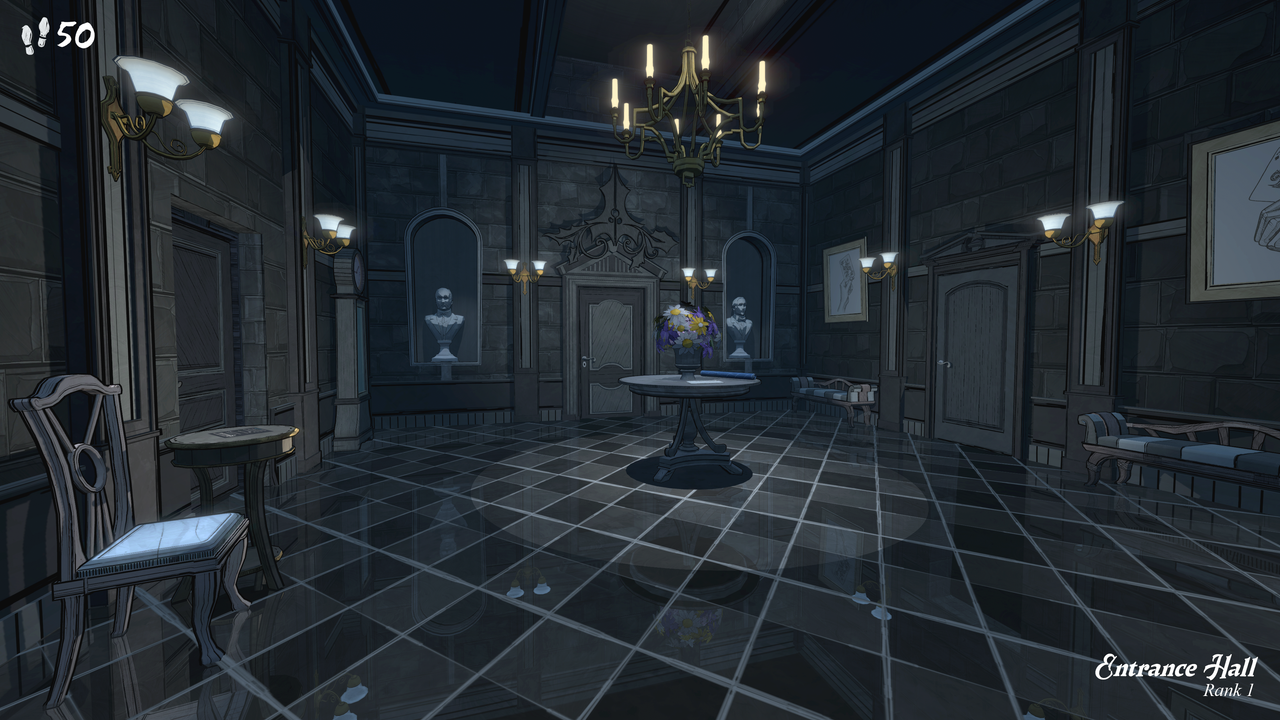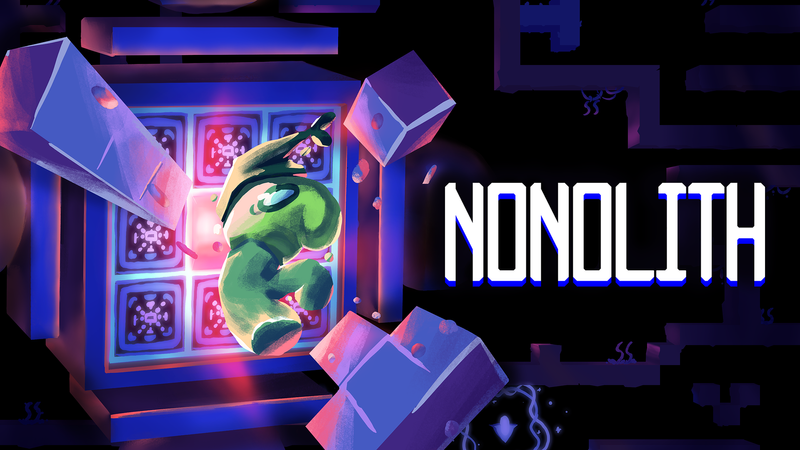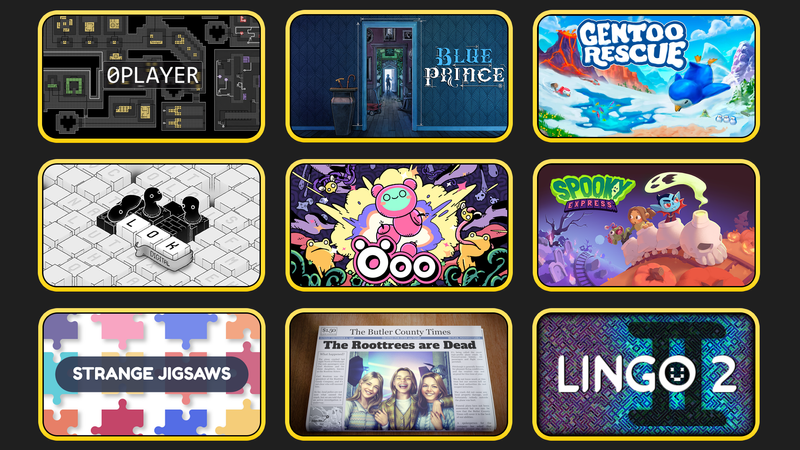Before I hand you the keys to Blue Prince and its sprawling puzzle mansion, I’d like to give a fair warning. This is a puzzle game best played knowing as little about it as possible - I would even go as far as avoiding the game's trailer. It's an adventure best experienced if you step through its doors free from expectations, guarantees, and assumptions.
Here are some breadcrumbs for those wanting more of a tease. If you like puzzle games focused on exploration and discovery, a game that will have you writing down a tome-worthy amount of notes, a neverending to-do list of mysteries to solve, and a game that rewards players who hyperfocus on every detail - that’s Blue Prince. There’s some Myst and Riven in there (The Witness - not so much), some Outer Wilds, and some Lorelei and the Laser Eyes. Blue Prince feels like an endless tessellation of locked doors, clues, and mysteries, like a puzzle box designed by M.C. Escher. It's certainly one of the best puzzle games I've played this year and might very well end up being the best puzzle game of 2025.
So yeah, if that sounds like a game you want to sink your hours into, have at it. I'll be going into more detail below, but FYI, this review is totally spoiler-free, so read on without worry.
Blue Prince begins with a classic mystery set-up. Herbert S. Sinclair has passed away, and in his last will left his entire estate - the manor house, the surrounding gardens, the lot of it - to you, his grandnephew. But good ol’ Herbie couldn’t just give you everything, now could he? The twist is that the Mt. Holly estate is yours IF you can find Room 46, an elusive room hidden within the mansion’s many hallways and hideaways. Calling this a quizzical task is an understatement of the century, and stepping through the mansion’s front door, it quickly becomes apparent that this task is not as simple as it first seems. Cheers, Gramps.
You don't simply explore the house in Blue Prince, you create it. When you go to open any of the mansion's doors, you're given the choice of three room tiles and picking one will make it magically appear on the other side. These three options are drafted from a much wider pool of potential rooms, so you never know which ones are going to crop up. The tiles you choose represent spaces you would usually see in an old rich dude's mansion - multiple bedrooms, a decked-out kitchen, a messy closet, an observatory complete with a fancy telescope, etc. Each one has a specific layout, like how a closet is a dead end or how a dining room will have multiple doors leading in different directions, so you need to pick connecting rooms and make pathways. Certain rooms cost gemstones to build, or you might approach a door and find that it's locked, meaning you'll need to return later when you have a key.
Placing tiles feels like carefully laying out stepping stones as you consider which rooms to pick to help you get further into the depths of the mansion. The house's blueprint is laid out in a grid of five rooms wide and nine rooms long, giving you a grand total of 45 rooms (not including the super secret Room 46). You need to think strategically about not only what rooms you place and where but also how you move through the house. With a step counter of 50 that depletes by one every time you enter a room, you must carefully place rooms with different rules and abilities that will help you keep exploring. When the step counter reaches zero, you’re out of energy and forced to retire for the day, booted out of the mansion. It's a pity that a place as sprawling as Mt. Holly doesn't have a single can of Red Bull.
There's also one last twist. At the end of each day, the mansion completely resets, and all the rooms you’ve built (and any items or tools you’ve found) get erased from its blueprint and return to your drafting pool. A new day means having to rebuild the mansion again, but each time you're equipped with new information you've gained from previous runs. Your day always begins as you walk through the mansion's front doors, but by the end of the day, who knows where you'll end up.
It's a bonkers premise - like something out of a Jonathan Creek or Miss Marple story - but you soon begin to understand the rules of the house, and strategies begin to emerge. Bedrooms grant you steps when you pass through them, so placing them in a location in the house where you’ll be moving back and forth is vital. There are always four gold coins on the pantry counter when you first build it, and you can buy fruit in the kitchen to get more steps. Placing a garage means a dead end, but you will get three keys, which are incredibly handy for any unexpected locked doors. A chapel will cost you a coin every time you enter, but it has three-door connections, making it a super flexible room to place on your blueprint.
The mansion is in itself a giant, abstract puzzle that you're exploring piece by piece, but there are also puzzles in the more classic sense. Math equations, wordplay, riddles - all that good brain food is here. Some puzzles are self-contained within rooms, but others span multiple rooms and need numerous loops to solve. This includes the game’s story, too, which isn’t just focused on a rite-of-passage test from ol’ Gramps but a deeper tale of betrayal and family drama. It's a tangled web of who’s who, what happened when, and why, but I’ll keep shtum on that. There were so many times when I'd discover a new clue, and my brain synapses would fire up as I'd hurriedly flick through my piles of notes and red string to link it with something else. Sorry if it feels like I’m dancing around some of the game’s finer points, but it’s for your own good - trust me.
I haven't even mentioned the tools yet! These are special items you can find and use around the house, like a metal detector that finds hidden keys, gems, and coins or a sledgehammer that lets you smash open locked chests. These become more important as you begin to notice details around the house and make connections. A photograph might just look like a normal family portrait until you peer closer at it with a magnifying glass and find something that will rock your world.
In this way, rooms don’t only connect physically but also information-wise. A switch in one room could trigger something in another. A seemingly ordinary room might hide a delicious secret when you have the right tool. Your step counter, which at first seems reasonable at 50 steps, begins to feel like a resource you need to carefully consider as you’ll find yourself bouncing back and forth to different rooms. Photos, paintings, numbers, dates, codes - everything has the potential to have a bigger meaning.
It's a juggling act of pros, cons, rewards, and rules in each run. As you push further into the house, you’ll start to be dealt rooms with higher ‘ranks’ and as you begin to place those within your map, Blue Prince’s puzzle house starts to reveal itself. It’s a building that totally defies physicality, and it's fascinating. This blend of strategy, roguelike, and mystery adventure creates an endlessly inventive genre-bending puzzle game. Poking around each room with a pocket full of items captures the same excitement of an escape room, and its tile placement RNG taps into the more strategy-based thinking of a board game.
I've spent so much time navigating the rooms and corridors of Blue Prince’s shape-shifting puzzle manor that it feels like my home away from home. Whenever I find a moment of peace from work, sleep, and life admin, I spirit myself away to Mt. Holly, ready to try another run. When I first started playing, I vastly underestimated the scope of the game, and - unfortunately - I can’t really explain what I mean when I say that. If you love games like the aforementioned Outer Wilds, you’ll know exactly what I mean.
However, one thing I will highlight is that if you are a puzzle fan who likes to approach each puzzle and mystery thread methodically, you might have trouble with Blue Prince. Lots of the puzzles require you to be with a particular item in a particular room - something that doesn’t happen often and you can’t really plan for. The game’s RNG regarding rooms, tools, and items means that you can't approach the game's bigger puzzles and mysteries methodically. There are certain ‘tools’ to help you shape the mansion and permanent upgrades that affect runs, but ultimately, you’re left to the mercy of the draft.
I can see how this can be frustrating, and I've had my own moments of grumbling annoyance at Blue Prince, but I also believe the game’s roguelike systems elevate it as a puzzle game. Having these RNG elements means you don’t get too attached to one line of thinking and encourages you to juggle multiple puzzles, ideas, and goals. Seeing the same environments over and over in different orders might not seem that compelling, but because there’s a huge amount of information, tools, and item combinations to discover, there’s always something new to get excited about.
When you don’t possess the right combination to achieve a certain goal you have in mind, it's tempting to close the doors to Mt.Holly forever, but this line of thinking is something that Blue Prince encourages you to let go of. The looping never feels like an endurance test but a new opportunity to pursue a different route, theory, and combination. Settling into a routine or always having a strict plan of action almost goes against the fluid nature of the game. Thinking on your feet and making decisions with the options you have is all part of the genius of this shapeshifting enigma.
As soon as I felt a pang of frustration with the game, a particular combination of rooms and items would reveal something new, and I'd feel a rush of accomplishment. Every run felt like I was chipping away at something bigger, making each loop feel important. The more I played, the more I began to understand how I could use what I had learned to shape the mansion to my liking. The early days of the merciless RNG were slowly replaced with runs where I had more control, and that felt incredibly rewarding. I didn’t just inherit this huge mansion, I had been given the tools to build my own. And when I thought I had reached the game's 'true end' another layer would open itself up, revealing new goals and new ways to interact with the house. Like unfolding a paper origami flower, it just kept opening and opening.
Embracing that randomness, leading with curiosity, and trusting your gut are all part of the game. In a Venn diagram of Dale Cooper and Sherlock Holmes, you're right in the middle. It’s such a quiet game on the first approach; there’s little music, the house is totally empty, and the only sounds are your footsteps. But in reality, Blue Prince is constantly communicating with you. Developers Dogubomb have been crafting this immaculate puzzle box for the last eight years, and it's magnificent.















